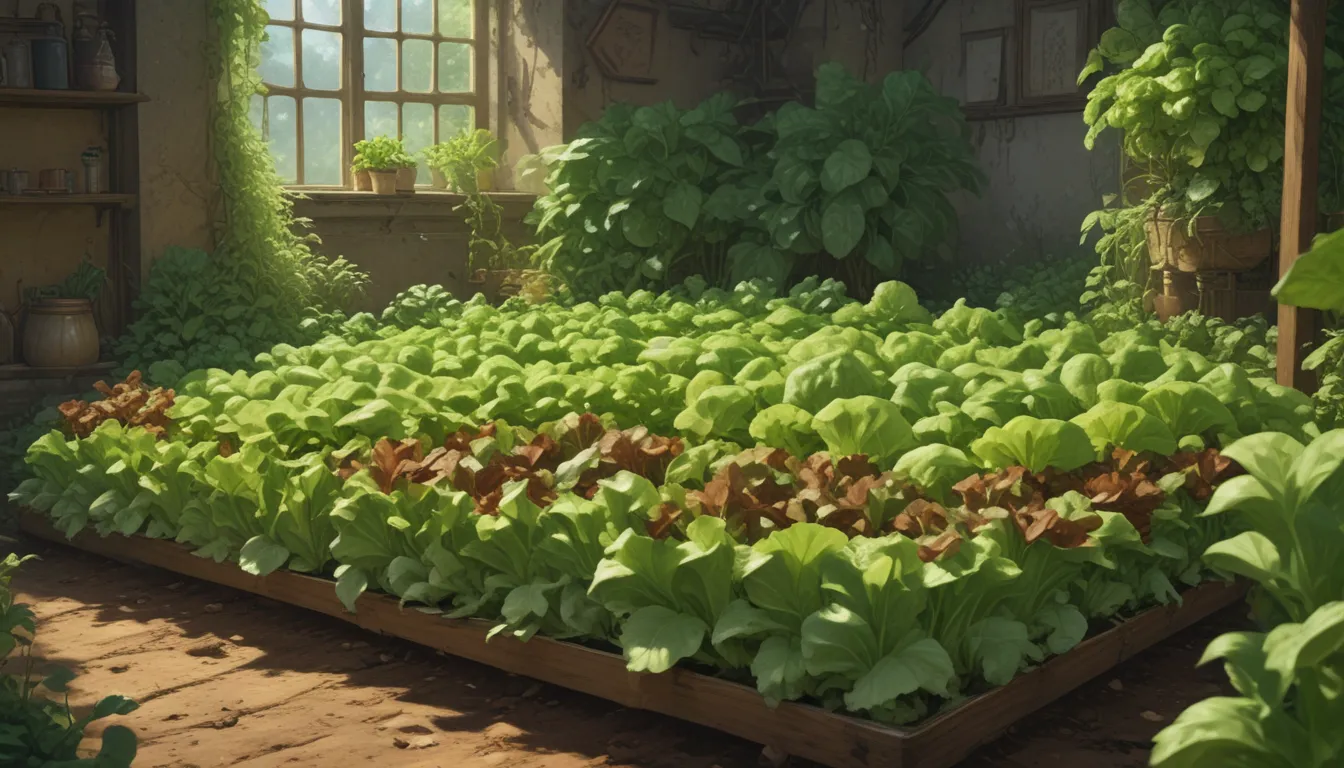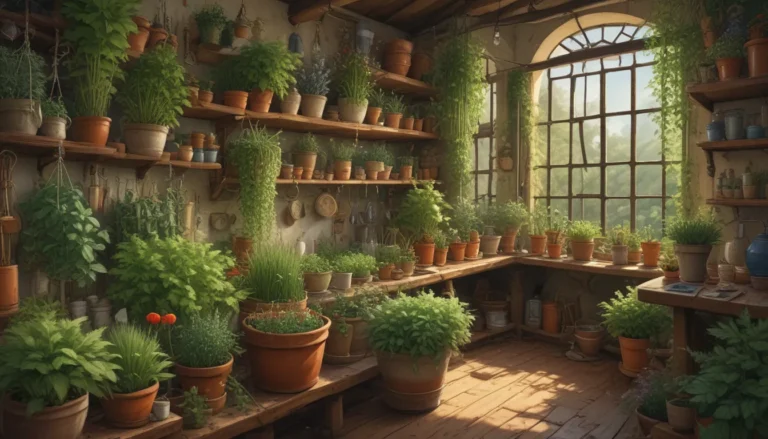How to Plant and Grow Leaf Lettuce: Your Complete Guide

Lactuca sativa
Are you eagerly waiting for the last spring frost to pass so you can start planting your leaf lettuce? The vibrant leaves of this plant are a welcome sight in the early weeks of spring. Easy to grow and quick to produce multiple harvests throughout the season, leaf lettuce is a gardener’s delight.
Growing leaf lettuce at home not only provides you with fresh, nutritious, and flavorful greens, but it also offers a sense of satisfaction that you’re enjoying something homegrown. If you’re eager to start your leaf lettuce journey, keep reading for all the essential tips and information you need.
What Is Leaf Lettuce?
Leaf lettuce, belonging to the botanical group Lactuca sativa, is known for its loose and spreading leaves that do not form a distinct head like other lettuce varieties. With a rapid growth rate, leaf lettuce reaches maturity in approximately 30 to 90 days, making it a quick addition to your garden.
Leaf lettuce is not only crispy and tasty but also packed with essential nutrients like vitamins A and K. It has been enjoyed by humans for centuries and is a key ingredient in healthy meals such as salads, wraps, and sandwiches.
Sowing Leaf Lettuce Seed
To ensure a fresh supply of tender leaves, it is essential to sow leaf lettuce seeds in succession. As a cool-season plant, lettuce thrives best when grown in spring or fall. You can even start the first batch of seeds indoors six weeks before the final frost date in spring for an early start.
When starting seeds indoors, ensure to use a 50:50 mix of coconut coir and perlite in a seed tray, keep the media moist, and provide adequate light and warmth for germination. After the seeds sprout, thin out the weaker seedlings and transplant them into the garden after hardening them off.
For outdoor planting, sow seeds directly in the garden and thin out seedlings once they reach a couple of inches in height. Remember to sow multiple rows throughout the growing season to ensure a continuous supply of young plants.
How to Grow Leaf Lettuce
Climate and Exposure Needs
Leaf lettuce thrives in USDA Hardiness Zones 2 to 11 and requires full sun to partial shade. It performs best in temperatures ranging from 50 to 70°F, making it ideal for cool-season crops. However, there are heat-tolerant varieties available for summer growing.
Soil Needs
Prepare your garden bed with loamy, well-draining soil rich in organic matter. Aim for a soil pH of 5.8 to 6.5 and consider annual amendments of compost or well-rotted manure to maintain soil fertility.
Water and Fertilizer Needs
Water leaf lettuce frequently to prevent water-related stress, especially with shallow roots. Ensure the soil is adequately moist, but avoid overwatering to prevent disease. Consider supplementing with organic fish emulsion fertilizer every two weeks to meet the high nitrogen requirements of these greens.
Growing Tips
- Provide full sun to partial shade.
- Amend soil annually with organic matter.
- Water plants when the soil feels dry an inch down.
Maintenance
Maintain a layer of organic mulch to suppress weeds, retain soil moisture, and help plants thrive. Lightly cultivate the soil when weeds appear and pinch off any flowers that form on the plants.
Leaf Lettuce Varieties to Select
Explore a variety of leaf lettuce cultivars to liven up your garden and meals. Choosing the right variety for your area and season is crucial for a successful harvest. Here are some popular leaf lettuce varieties:
- Black Seeded Simpson: Quick-to-mature variety with mild sweetness.
- Grand Rapids: Perfect for classic green salads, crisp and tender.
- Lollo Rosso: Italian variety with ruffled, dark pink leaves.
- Merlot: Deep burgundy leaves with a touch of green at the base.
- Oakleaf: Oak-shaped leaves with pale green, tender foliage.
Managing Pests and Disease
Stay vigilant for pests like aphids and cutworms that can damage your leaf lettuce plants. Organic controls such as insecticidal soap and horticultural oil are effective against common pests. Additionally, protect your plants from rabbits, squirrels, and deer by using fences or row covers.
Ensure consistent watering and maintain proper soil pH to prevent issues like tip burn, damping off, and downy mildew. If pests or diseases become severe, consider removing affected plants to protect the rest of your crop.
Harvesting
Harvest leaf lettuce by cutting the leaves two inches above the soil with a clean knife or scissors. This allows for continuous growth and multiple harvests throughout the growing season. Remember to harvest leaves when they are young and tender to avoid bitterness.
Preserving
Rinse harvested leaves under running water and dry them before storing in the refrigerator for up to a week. Avoid freezing leaf lettuce as it can damage the texture of the leaves when thawed.
Recipes and Cooking Ideas
Leaf lettuce can be used in a variety of dishes, including salads, wraps, sandwiches, and burgers. Here are a couple of tasty recipes featuring leaf lettuce:
- Leafy Sprouts Salad: A nutritious salad dressed with a sorghum chili vinaigrette.
- Triple Berry Salad: A combination of strawberries, blueberries, and raspberries with savory toppings.
Quick Reference Growing Guide
- Plant Type: Annual vegetable
- Maintenance: Moderate
- Hardiness (USDA Zone): 2-11
- Season: Cool
- Exposure: Full sun to partial shade
- Time to Maturity: 30-90 days
- Spacing: 4-8 inches
- Height: 6-12 inches
- Spread: 6-12 inches
- Growth Rate: Fast
- Common Pests and Diseases: Aphids, cutworms, damping off, downy mildew
- Water Needs: Moderate
- Tolerance: Cool temperatures
- Soil Type: Rich, loamy
- Soil pH: 5.8-6.5
- Soil Drainage: Well-draining
- Companion Planting: Beets, carrots, onions
- Avoid Planting With: Blueberries, brassicas, cucumbers
Grow Your Own Leaf Lettuce
With the right care and attention, you can enjoy a bountiful harvest of fresh leaf lettuce in your garden. By following these tips and guidelines, you’ll be well-equipped to grow, harvest, and enjoy your homegrown greens. Experiment with different varieties, practice good garden maintenance, and savor the fruits of your labor with delicious recipes featuring your leaf lettuce. Happy gardening!





